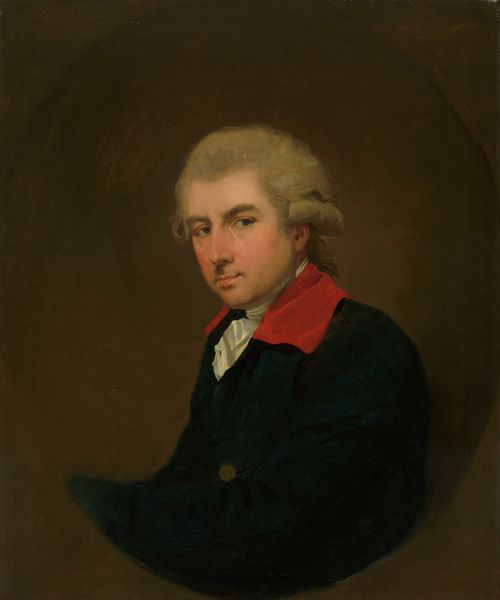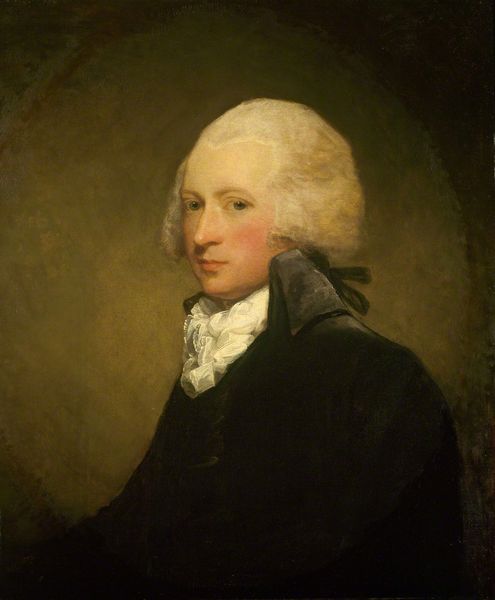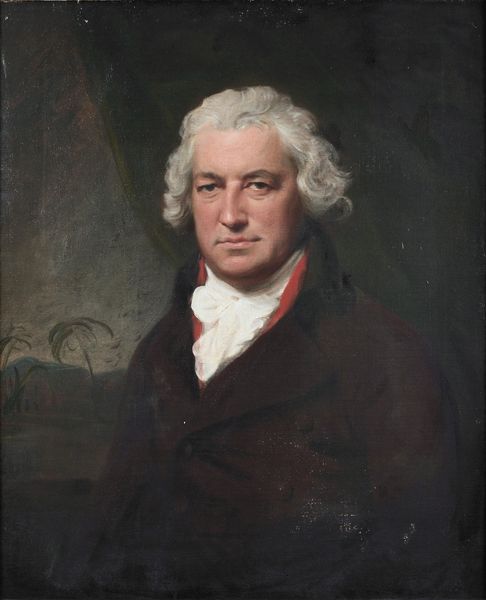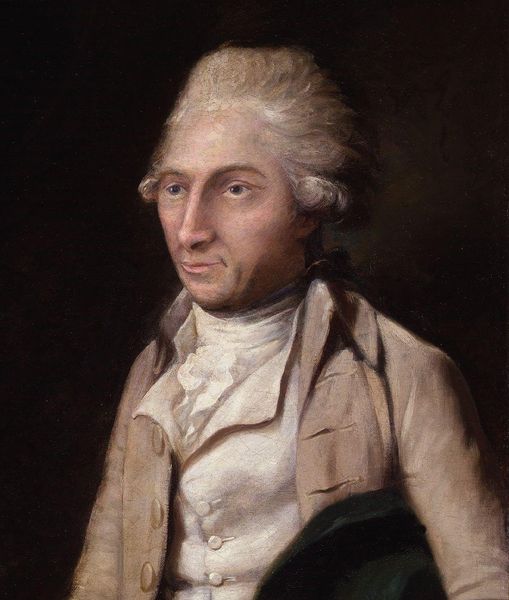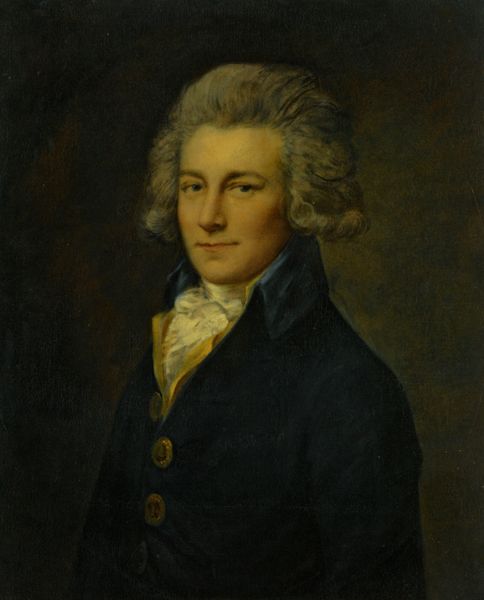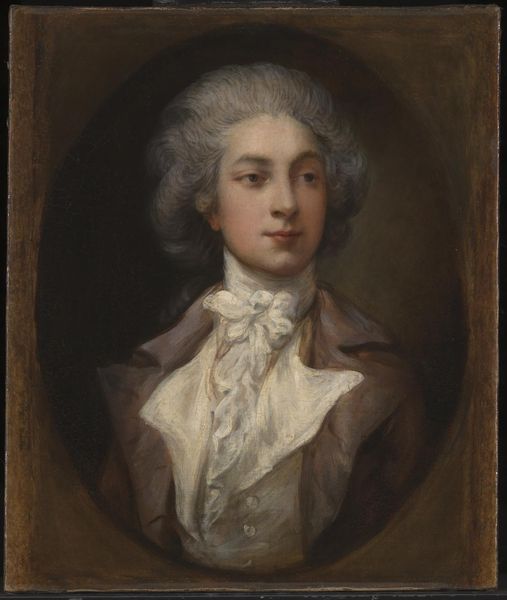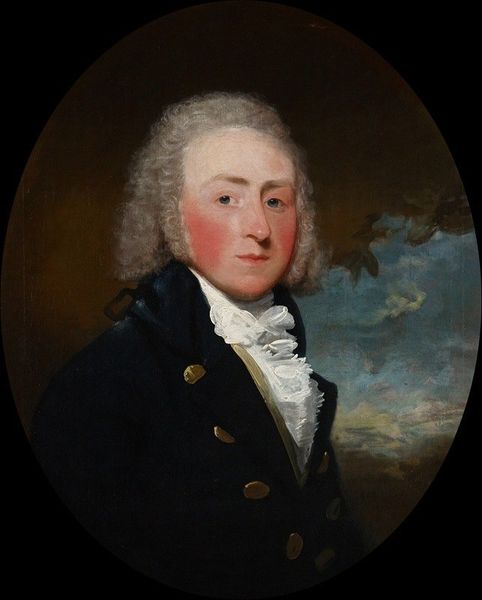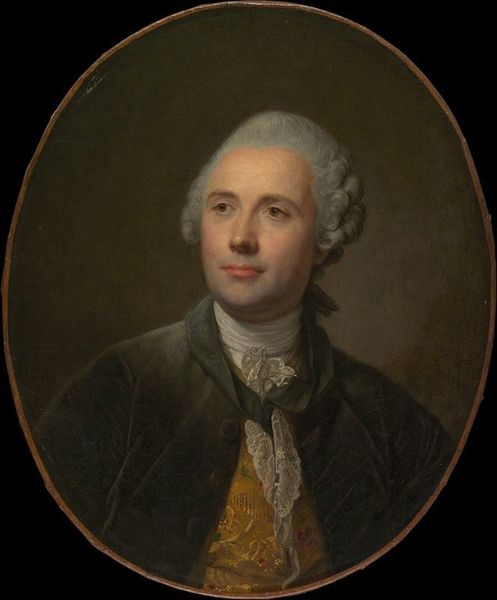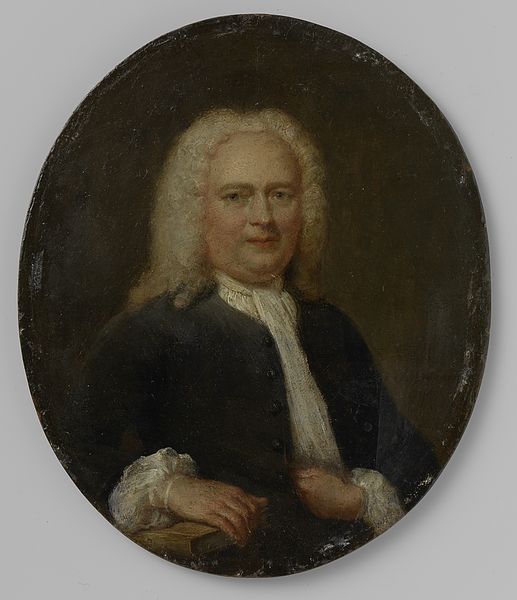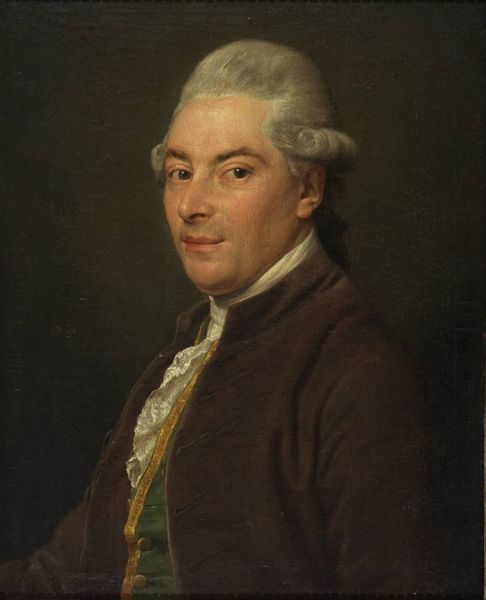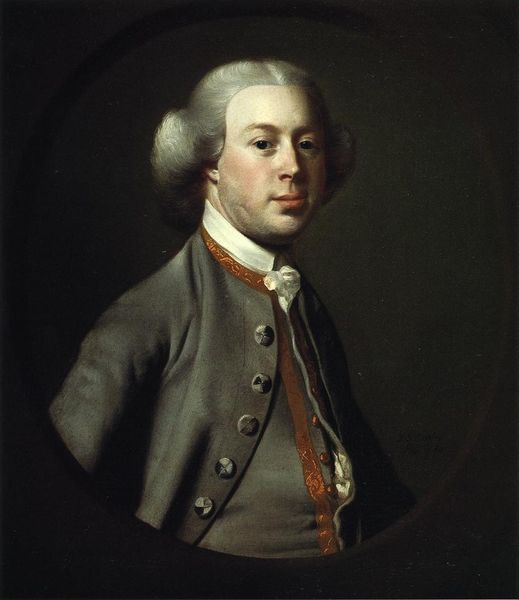
painting, oil-paint
#
portrait
#
figurative
#
neoclacissism
#
painting
#
oil-paint
#
romanticism
#
history-painting
Copyright: Public Domain: Artvee
Curator: Up next we have Jens Juel’s portrait of Bernt Anker Chamberlain, likely dating from the 1790s, rendered in oil. It’s a classic example of late 18th-century portraiture. Editor: My first thought is the restrained color palette creates an air of formality and perhaps even melancholy. He's certainly presented as someone important. But look closely at the face – there’s a weariness in his eyes that hints at a life beyond courtly expectations. Curator: Bernt Anker Chamberlain’s life, like the imagery surrounding his depiction, needs contextualization. The portrait situates him as a figure of status through dress, composure and artistry. His life, and career, were rooted in economics, politics, trade and colonial activity in this era of burgeoning international trade and slavery. Editor: Absolutely. And the flamboyant ruffle – quite a statement. The artist’s decision to draw attention to details like the ruffle, serves as a kind of amplification of a masculine performance; what social expectations were thrust upon the figure by the elite? Is there any commentary by Juel intended? Curator: Well, Juel was the leading portrait painter of his day in Denmark. He understood how to depict status. Looking at this artwork in that frame, what does the construction of elite identities reveal about societal values at the time? Editor: The whiteness is a central focus, and beyond complexion. Think about the context— the expansion of the transatlantic slave trade, and rise of European colonialism— where whiteness itself, visibly and culturally, becomes intrinsically linked to ideas about freedom and power, yet exists through systemic oppression. Curator: Portraits like these circulated in specific social spheres. It solidified status and lineage; they are political objects with intent. In some ways, this painting can serve as a visual anchor, encouraging a reevaluation of a system in the Danish West Indies and globally, by bringing together these economic, racial and philosophical discourses to reveal hidden colonial power. Editor: I agree. Considering how the art object plays within larger colonial frameworks offers such insights for examining our past, its effect, and its connection with contemporary power dynamics. Curator: Indeed, an examination like this one urges us to continue probing. Editor: And that’s precisely the power and urgency of revisiting these works critically.
Comments
No comments
Be the first to comment and join the conversation on the ultimate creative platform.
